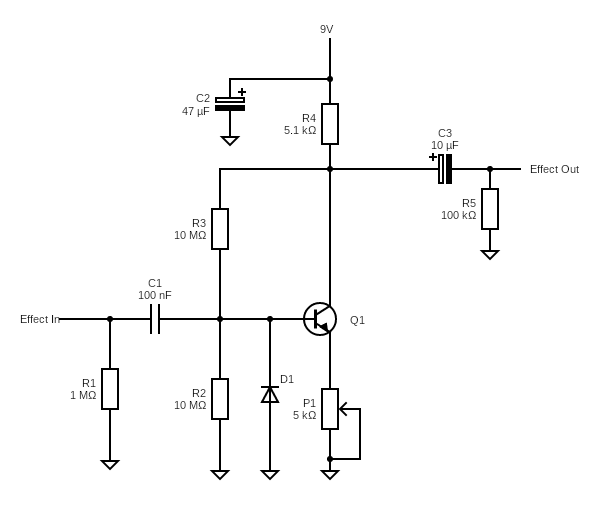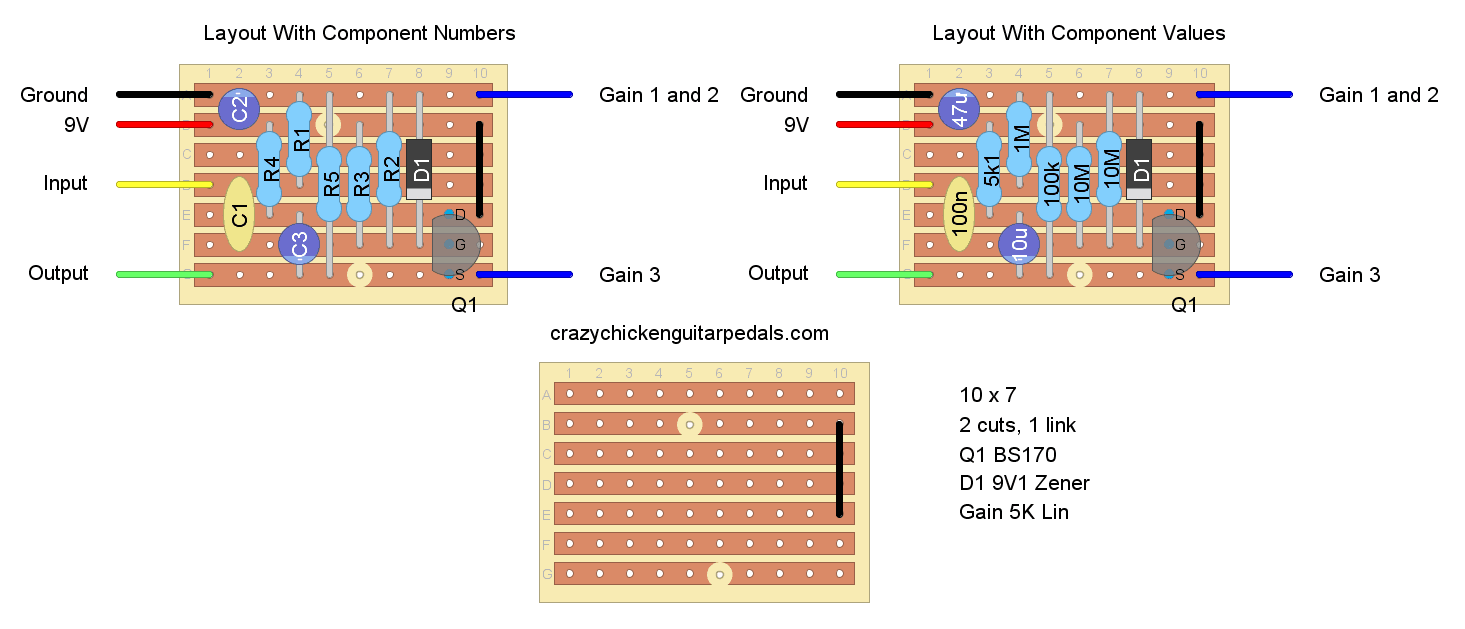Time to build a ZVEX Super Hard On!
The Super Hard On, or SHO, by ZVEX is a nice little boost pedal. It offers a fairly clean boost with only a little bit of clipping at higher gain levels. It’s also transparent, so all it’s doing is pushing your sound as far as it can, with nothing else in the way.
Despite being a great sounding pedal, ZVEX’s SHO is super simple to make. It fits on a 10 x 7 bit of stripboard and only has 10 components on it! For many, the SHO is a great first project when first learning how to make guitar pedals. So, if you’re looking for beginner pedal builds, you’re in the right place. In fact, the SHO was my first build on stripboard. Because of this, I’m writing a lot of this build report from memory… there’s been a few!
If you’ve stumbled across this article because you heard that the SHO was the way to go to get started, welcome to a great new hobby. If everything here is confusing, check out my beginners guide to building effects pedals; it’s a collection of articles on the gear you need, terminology, and some how tos.
Super Hard On Wiring Schematic
Here’s the schematic for the SHO.
Click on the schematic to enlarge it.
And here’s the bill of materials.
| Notes | ||
|---|---|---|
| R1 | 1M | |
| R2 | 10M | |
| R3 | 10M | |
| R4 | 5.1k | |
| R5 | 100k | |
| C1 | 100nF | |
| C2 | 47uF | |
| C3 | 10nF | |
| Q1 | BS170 | |
| D1 | 9V1 Zener | Reverse polarity protection. |
| P1 | 5K Lin | Gain potentiometer |
| Jacks, power supply, etc. | Don't Forget | The stuff you usually use. |
Circuits don’t come much simpler than this…
If you’re looking how to learn to read circuit diagrams or breadboard effects, this is a good pedal to start with. Really, all that’s happening here is the transistor (Q1) is amplifying the guitar signal, with the potentiometer (P1) used to modify the resistance going to ground and therefore the gain. The capacitors are just there to smooth out the DC current (C2) and prevent that current from moving to the amp (C2 and C3). Most of the resistors are there to balance out the gain, with R1 and R5 primarily being draw down resistors.
There’s not much to change here really! But you can use this circuit as a basis for something bigger.
- Try a different transistor. Different transistors will have different gain and may add some fuzz.
- This is a pretty similar circuit to an Electra distortion circuit; chuck some diodes after C3 to make a simple distortion or overdrive pedal.
ZVEX Super Hard On Stripboard Layout
With only 10 components (plus a potentiometer), there’s not much to this… If this is your first pedal though, take your time with it. Even though the SHO is classified as “easy,” it’s not easy if you’ve never done this before. That’s fine. If you get lucky, you’ll have it working the first time. If it doesn’t work, check out my guide to debugging DIY guitar pedals.
On the image below, you’ll see that the left layout has component numbers as per the schematic above, this is useful if you’re making modifications. On the right, I’ve just put the component values so you can build it as is. This is the layout from Tagboard Effects, I’ve redone it to include component numbers.
Check it out:
Click on the diagram to enlarge it.
My Experience Building The Super Hard On
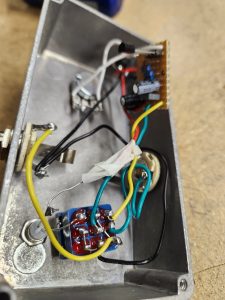 The SHO was one of my first guitar pedal builds. While it was awhile ago, I wanted to include it on this site because I want to provide resources for beginners, and this is the ultimate beginner’s DIY guitar pedal!
The SHO was one of my first guitar pedal builds. While it was awhile ago, I wanted to include it on this site because I want to provide resources for beginners, and this is the ultimate beginner’s DIY guitar pedal!
Honestly, my experience was pretty cruisy. Some of the solder joints aren’t the greatest, but the build went off without a hitch. In fact, I was surprised at how quickly the pedal building process went.
Since I was new at the time, the biggest challenge I had was making sure every component went where it was supposed to. I didn’t solder anything into the wrong spot, but I was double and triple checking everything!
I plugged it in and… it worked! It was quite amazing and I’ve been hooked on making my own guitar pedals ever since. Hopefully you have the same experience if this is your first pedal.
How Does The ZVEX Super Hard On Sound?
 The SHO sounds like a clean boost; it does what it says.
The SHO sounds like a clean boost; it does what it says.
Since this is a single knob pedal, there’s not much to say other than going through different gain settings. And they all sound good.
At lower settings, the SHO gives a bit more volume to the guitar, giving that little bit extra to push through the rest of the band for solos and lead parts. Lower gain settings also give the guitar tone a little bit of an organic quality. I run this through a solid state amp. and the SHO with a small amount of gain give the tone a more tube-like quality.
As this thing gets cranked up, it quickly gets loud. I’ve hardly used it at its full strength, lest I piss off the neighbours. As it gets pushed further and further, the sound starts to break up a little bit, but not in an overdriven, distortion, or fuzz kind of way. Again, it just gives the organic quality of a tube amp getting pushed beyond where it’s comfortable. Backing off on the guitar volume takes away some of the breakup but still with an awesome tone.
The Super Hard On by ZVEX is a pretty clean and transparent boost, and it’s easy to make. Give it a try.
Related posts:
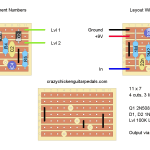 Lovepedal Champ On Stripboard
Lovepedal Champ On Stripboard
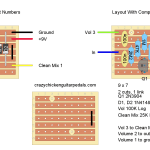 Greer Amps Green Giant On Stripboard
Greer Amps Green Giant On Stripboard
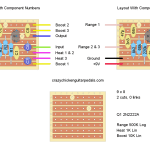 Catalinbread Naga Viper On Stripboard
Catalinbread Naga Viper On Stripboard
 EartherQuaker Devices Speaker Cranker On Stripboard
EartherQuaker Devices Speaker Cranker On Stripboard
 Escobedo Harmonic Jerculator On Stripboard
Escobedo Harmonic Jerculator On Stripboard
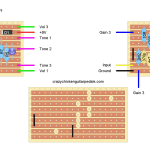 Lovepedal Purple Plexi On Stripboard
Lovepedal Purple Plexi On Stripboard
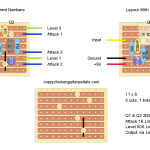 Vox Tone Bender On Stripboard
Vox Tone Bender On Stripboard
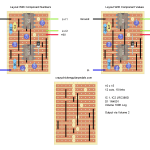 EarthQuaker Devices Acapulco Gold On Stripboard
EarthQuaker Devices Acapulco Gold On Stripboard
 Colorsound One Knob Fuzz On Stripboard
Colorsound One Knob Fuzz On Stripboard
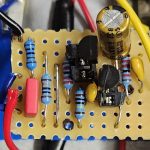 How To Make A Distortion Pedal
How To Make A Distortion Pedal
